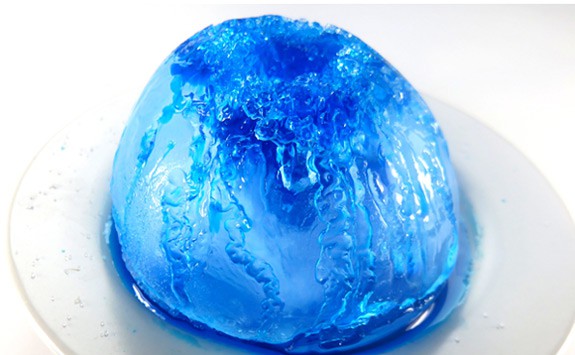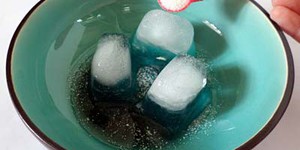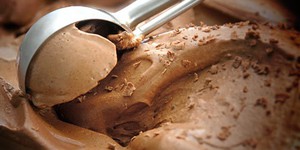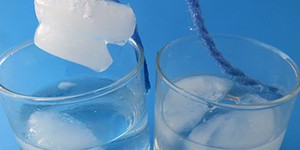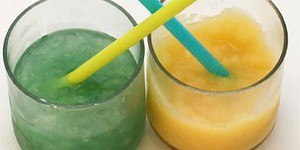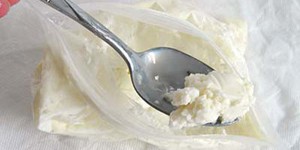Summary
Introduction
Have you ever wondered why ice cubes in your cold drink become gradually smaller, or why their surface becomes smoother as they melt? Does ice always melt this way?
In this activity, you will use water balloons to create giant ice balls and observe how they melt. Can you predict the effect a bit of salt will have on your giant ice ball?
Materials
- Water balloons
- Water
- Freezer
- Oven mitt
- Small plates
- Cup
- Table Salt
- Water dropper or syringe
- Food coloring, preferably liquid
- Workspace that can get wet
- Towel to wipe your workspace
- Optional: Flash light
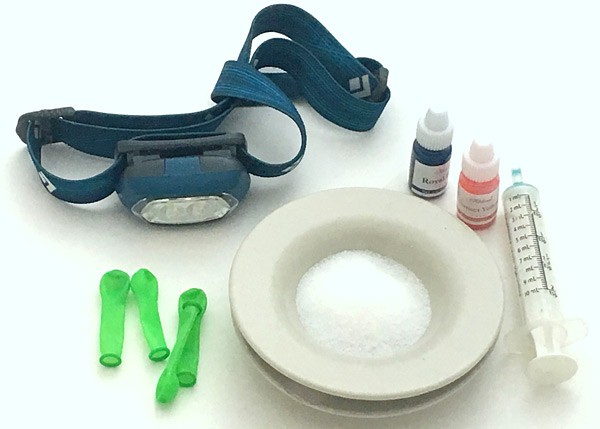 Image Credit: Sabine De Brabandere, Science Buddies / Science Buddies
Image Credit: Sabine De Brabandere, Science Buddies / Science Buddies
Prep Work
- The day before you plan to do the activity, fill a water balloon with water, tie the balloon with a knot, and freeze it overnight or for a couple of hours. Freeze at least two balloons for each person doing the activity.
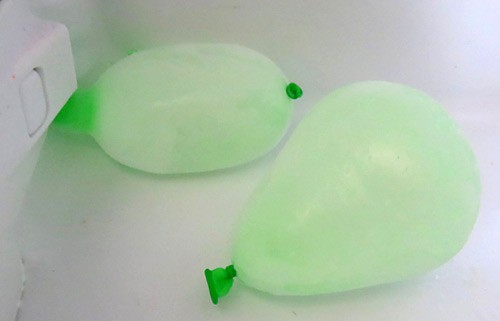 Image Credit: Sabine De Brabandere, Science Buddies / Science Buddies
Image Credit: Sabine De Brabandere, Science Buddies / Science Buddies
- Just before you plan to do the activity, fill a cup with water and add food coloring.
- Choose an area that can get wet to do the activity.
Instructions
- Put on oven mitts to retrieve the two frozen water balloons from the freezer. Peel off the balloons so you are left with two ice balls. Some ice balls might be in a pear shape rather than a ball. That is fine.
- Place each ice ball on a small plate and place them next to each other.What do you think will happen if you sprinkle salt on the ice ball?
- Sprinkle about 1/8 teaspoon of salt on the top of each ice ball, add a few drops of colored water to moisten the salt, and observe.
- Wait a few minutes.What happens? Is it what you predicted?
- Drip more colored water over the top of the ice ball on the left. Leave the other untouched.Do you think one ball will melt faster than the other? If so, which one and why?
- Observe and intermittently drip water over the left ball, leaving the other untouched. If you can, suck up the water collected in the plate and drip it back over the left ice ball. You may need to discard water from the plate when it looks like it may overflow.Does one ball melt faster than the other? Why do you think this is the case?
- Occasionally sprinkle more salt on top of both ice balls, followed by a few drops of colored water to wet the salt.What happens when you add more salt?
- Keep observing.Can you see patterns appear in the ice? If so, are the patterns on the two ice balls similar? Can you explain what you observe?
- Have fun adding food coloring, salt, and water.Can you make beautiful patterns?
- Optional: Hold a flashlight behind your melting ice balls and see how the patterns light up.
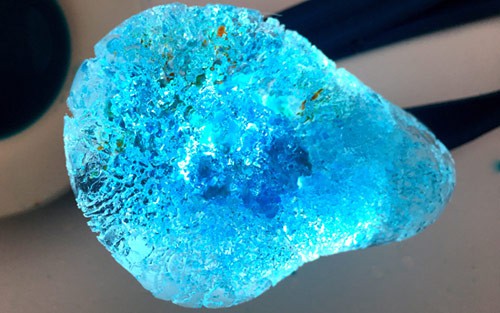 Image Credit: Sabine De Brabandere, Science Buddies / Science Buddies
Image Credit: Sabine De Brabandere, Science Buddies / Science Buddies
What Happened?
Did you see how the ice melts faster where it is in contact with wet salt? Did streams of melted water appear on the left ice ball, and did deep caverns pierce through the ice on the other ball? This is expected.
When ice melts, water and ice coexist. Since salt particles make it harder for water particles to freeze back onto the ice, the ice that is in contact with dissolved salt melts faster. When the salt water flows over the surface, it melts the ice on its way, creating channels, like rivers, over the surface of the ice ball. When the salt water is trapped in one location, like in the case of the ice ball on the right, it erodes a path down into the ice, creating sharp ridges or peaks. Food coloring makes these patterns more visible.
 Image Credit: Sabine De Brabandere, Science Buddies / Science Buddies
Image Credit: Sabine De Brabandere, Science Buddies / Science Buddies
When salt is sprinkled over the ice without adding water, the salt will dissolve in melt water and have the same effect—it only takes a little longer to see the results.
Digging Deeper
All matter is made up of tiny particles, and temperature is a measure of how much these tiny particles move. Even the particles in a solid like ice move, they vibrate, but because they are cold, they do not wiggle much and can hold onto each other. In the case of water, the particles arrange themselves in a regular lattice.
When ice is surrounded by air or liquid at room temperature, it absorbs heat from its surroundings. As a result, the tiny particles in the ice start to vibrate more. Those at the edge might break loose and flow freely over and alongside each other and the ice. At this stage, water and ice coexist. This is an active process: some particles break loose, while others attach to the solid. Because the surroundings are at a higher temperature, more break loose than reattach, so we see the ice melt. For pure water, this coexistence of water and ice happens at 0°C or 32°F. When the surroundings are cooler, heat will flow to the surroundings, cooling down the water particles. As a result, more particles attach to the lattice, and we see the ice grow.
When table salt (or sodium chloride) is dissolved in water, sodium and chlorine particles are added to the water particles. These make it more difficult for water particles to arrange themselves in a regular lattice and solidify into ice. That is why you need to cool salt water well below 0°C or 32°F before it becomes ice. Scientists call this phenomenon freezing point depression.
When pure ice is surrounded by a salt water solution at room temperature, particles at the edge of the ice will absorb heat and start to wiggle more. Some might break loose, and flow freely. At the same time, some water particles might try to reattach, but with the sodium and chlorine particles in the way, it is difficult for the water particles to reattach to the ice. As a result, ice in contact with room temperature salt water melts faster compared to ice in contact with room temperature water or air.
Ask an Expert
For Further Exploration
- In this activity, you sprinkle salt on ice and moist it. Explore other scenarios, like sprinkling salt without adding a few drops of water, or dripping salt water over the ice balls. Can you find how these changes impact the ice differently? Why would this be the case?
- If you have access to snow, do the activity on a ball of snow.
Related Resources
Project Ideas
Activities
Links
- Blog Post: Melting Ice: Weekly Science Activity
- Blog Post: Ice Cream Science: Weekly Science Project Idea and Home Science Activity Spotlight


